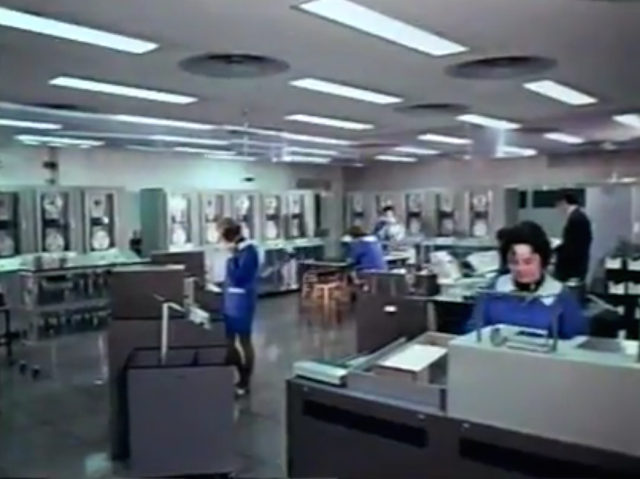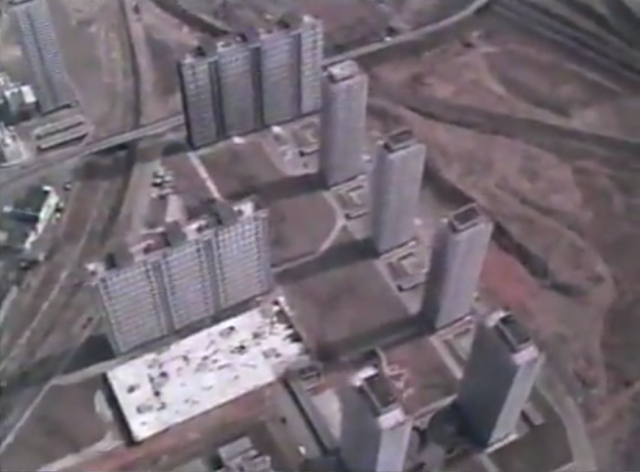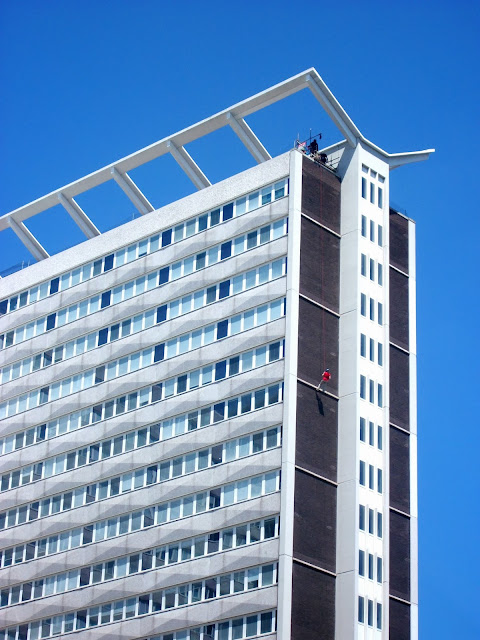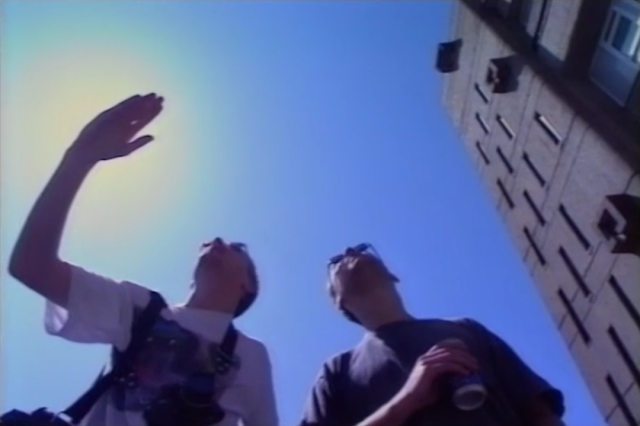Glasgow 1980 (or is it really Glasgow 1971?)
This is a film for people about the city they live in, about how the city is changing for people.
Every so often in this seemingly endless trawl for postwar cinematic gems that capture the era's grand plans and rebuilding schemes, I come across something that's truly exceptional. Oddly, more often than not those films are Scottish. This one is an absolute cracker.
Glasgow 1980 is a film made, confusingly, in 1971. Perhaps that's why, despite the upbeat narration, the feel of the piece is pure Get Carter: brand new gritty concrete landmarks and an urban scene so perfect for the cinematographer to create disorientating angles and looming drama.
This film covers the period from 1960, when the redevelopment programme began in earnest, and projects forwards ten years after the film has been made. At this half-way point we see all manner of different huge projects in motion. We see Kingston Bridge, half-finished, the start of the urban motorway box, which the film promises will be complete by 1980. We see plans of Springburn, and shots of Basil Spence's towers at Queen Elizabeth Square. We also see the monolithic towers of Red Road from the air.
As ever, the human highlights in the film aren't the peaceful shots of walks in the country or kids at school, but the record of gaudy neon nightlife and discos, the strange technology of pre-digital offices, and that alien invader – the supermarket, where abundance overwhelms the viewer, partly because the shopper we follow puts everything she sees into her trolley, even her kids.
Every so often in this seemingly endless trawl for postwar cinematic gems that capture the era's grand plans and rebuilding schemes, I come across something that's truly exceptional. Oddly, more often than not those films are Scottish. This one is an absolute cracker.
Glasgow 1980 is a film made, confusingly, in 1971. Perhaps that's why, despite the upbeat narration, the feel of the piece is pure Get Carter: brand new gritty concrete landmarks and an urban scene so perfect for the cinematographer to create disorientating angles and looming drama.
This film covers the period from 1960, when the redevelopment programme began in earnest, and projects forwards ten years after the film has been made. At this half-way point we see all manner of different huge projects in motion. We see Kingston Bridge, half-finished, the start of the urban motorway box, which the film promises will be complete by 1980. We see plans of Springburn, and shots of Basil Spence's towers at Queen Elizabeth Square. We also see the monolithic towers of Red Road from the air.
As ever, the human highlights in the film aren't the peaceful shots of walks in the country or kids at school, but the record of gaudy neon nightlife and discos, the strange technology of pre-digital offices, and that alien invader – the supermarket, where abundance overwhelms the viewer, partly because the shopper we follow puts everything she sees into her trolley, even her kids.






























Thank you so much for digging this film out and posting it, John; I grew up in the south side of Glasgow in the 70s, and so much of the film brought back memories: of how things were, and of the city's defiant optimism about how its post-industrial future would look. I still live close to the city and, as it happens, the future wasn't as good as the film suggested it would be; but nor has it been quite as bad as might have been feared in 1971.
ReplyDeleteOne further thing: I watched right to the end, and I saw that the film was edited by Bill Forsyth - IMDB confirms that it was indeed that Bill Forsyth - and directed by Oscar Marzaroli, whose photographs of post-war Glasgow have contributed a significant amount to the way in which the city sees itself.
(Love Concretopia, and the blog.)
Loved the old buildings especially the tenements and Queen Elizabeth square,the Gorbals was a great place to live, as was Oatlands, saw my old house in Queen Elizabeth Square .The express way was so different even coming off it you could drive into Hayburn St in Partick how things change. The Richmond Park was always full people came from all over to spend a day there gone are the days of growing up with not a care in the world. WOULDN'T CHANGE MY HAPPY LIFE IN THE NOTORIOUS GORBALS FOR ANYTHING, MADE ME AND A LOT OF OTHER KIDS WHO WE ARE TODAY
ReplyDelete